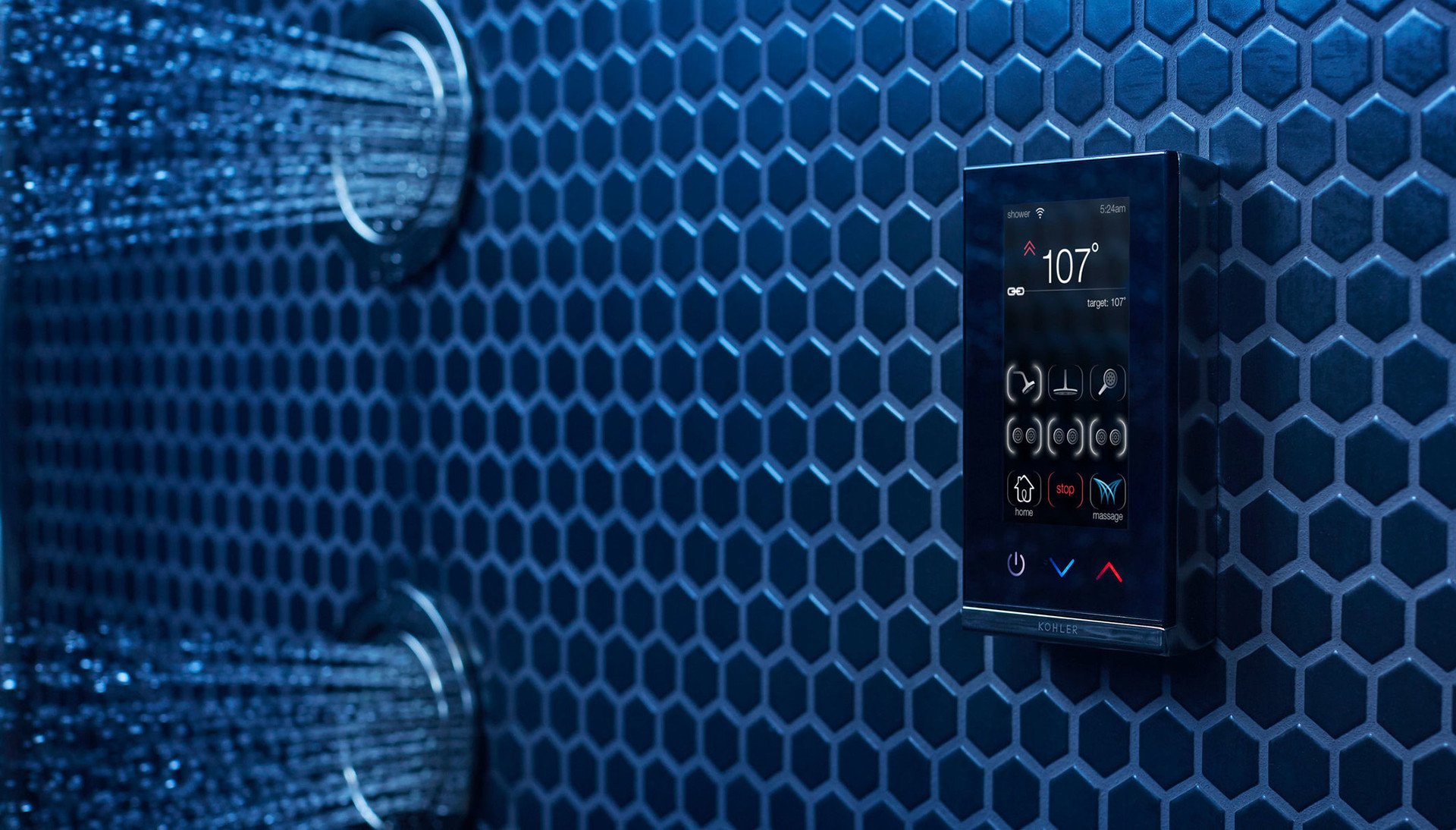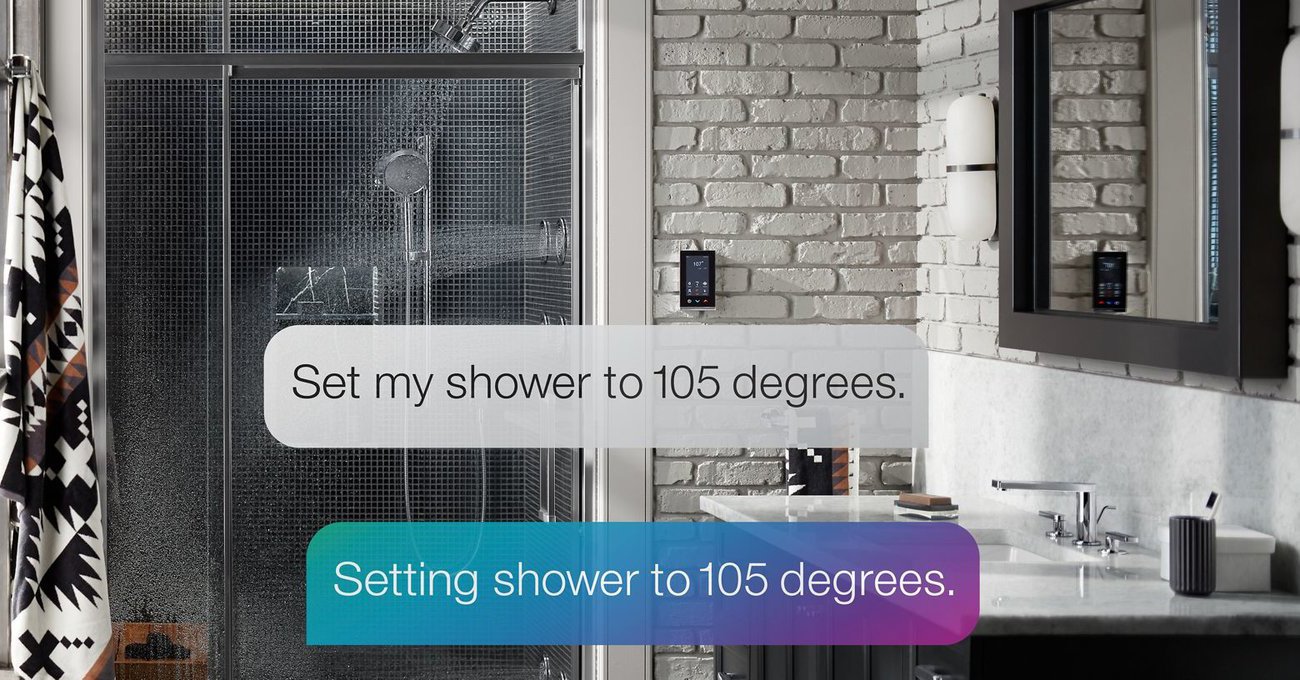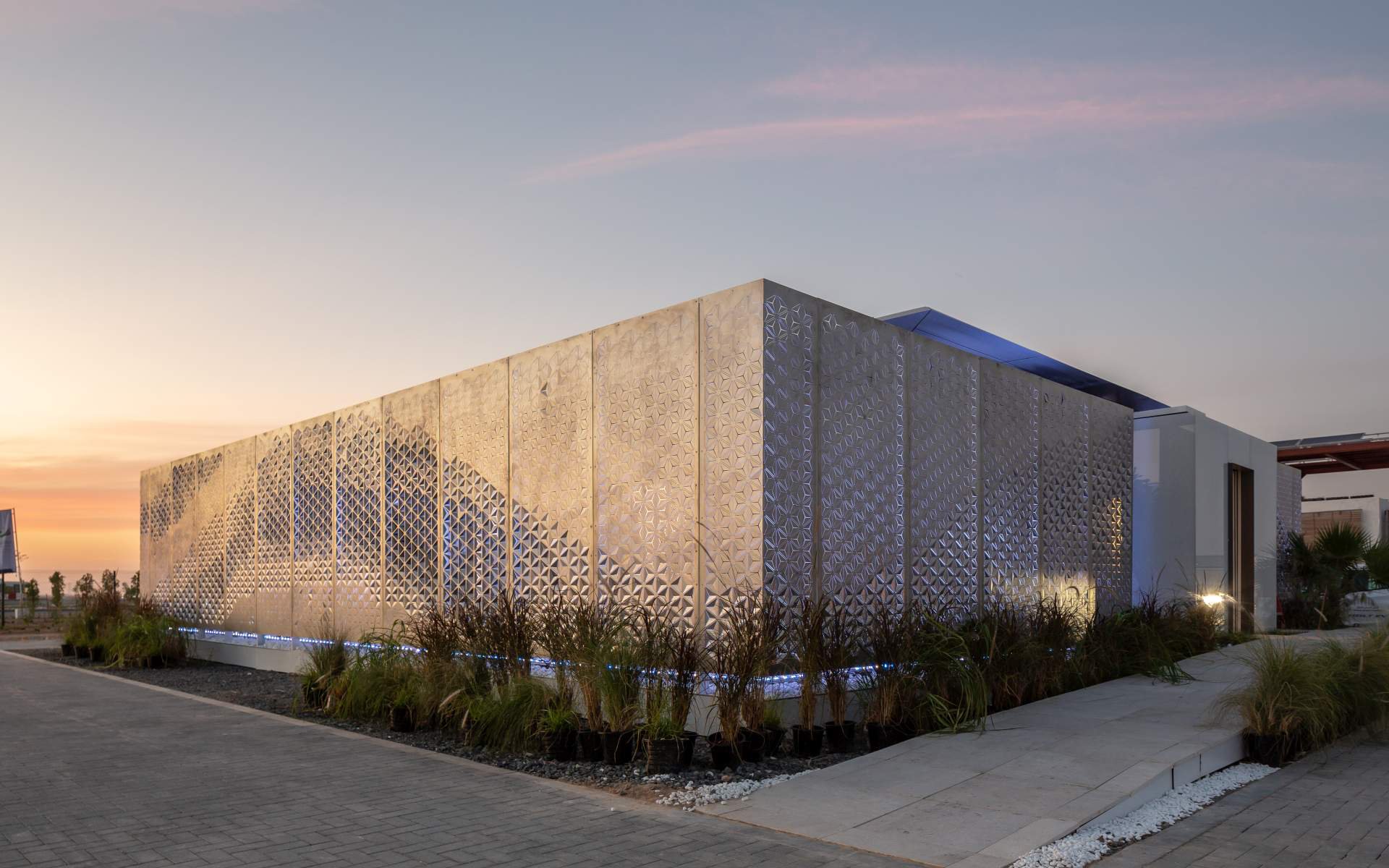2020 kicked off with, most notably, the pandemic, which fundamentally changed the way we work and live. But we also entered 2021 with a host of advancements that have managed to become a critical part of our lifestyles.
It’s going to be an interesting and unusual decade for residential design. 2020 kicked off with, most notably, the pandemic, which fundamentally changed the way we work and live. But we also entered 2021 with a host of advancements that have managed to become a critical part of our lifestyles. While we’re not at a Jetsons level of innovation (yet), the home of today has certainly undergone some interesting developments.
While socio-economic developments continue to drive a lot of macro-level design decisions, there are several underlying trends also competing for attention. We take a look at the most dominant ones, and how they’re changing the way we live.
Above: Kohler’s DVT+ Smart Digital Showering system
Smart Technology and Connected Homes
The goal of interior design is to create a space where you could relax, enjoy, and basically feel your best self. Interiors strive for a perfect balance between functionality and aesthetics. A home is where you’re most productive or relaxed, and depending on your mood, you can easily switch between the two. Smart home technology has enabled us to take this to a whole new level.
Motion sensors and the ability to wirelessly control lights around the house were the first few signs of a smart home. Compared to what we have now, the latter almost seem like relics. Products, such as Google Home, have changed how we view smart technology. Products like Nest thermostat or the Philips smart LED means we can change the setting and mood without having to get off our couches. Even better, we can use connected devices to create settings based on mood. Light switches and panels are slowly becoming obsolete design elements, and being replaced by apps on our phones.
Smart beds are another cool component of smartphones that will become increasingly popular in the future. Past smart-beds have come across as tacky and poorly designed, but that’s changing. With consumers now wanting to monitor every aspect of their health digitally, smart beds that are able to monitor sleep patterns, fit well into the digital tool-kit. Additionally, they offer temperature control and positioning as well.
Another interesting trend we’ve noticed is the adoption of digital technology and software integration into bathroom products. Take Kohler for example, who’ve got an entire range of smart home products. By combining connected speakers, lights, and more into their stunning ranges, they aim to provide a showering oasis. Their DTV+™ Smart Digital Showering System integrates with your digital ecosystem to create a personalised experience. It’s capable of syncing with your smart assistant (Google Home, Alexa) and can learn how to recognise your voice! Just say “Start my morning shower”, and your favorite music, light setting, and bathing experience turns on. All of it can be set through the Kohler Konnect app. Regular showers are SO yesterday!
Clockwise from top left: Dyson LightCycle; Smart Bed; Google Home; Quooker Fusion; Nest
The WFH Culture
There’s no escaping this one. What started as a grand experiment that we were forced to participate in, has arguably worked out as a way of working, possibly for the better. While the debate continues over whether people are productive or not, WFH is here to stay, because businesses have realized that, for one thing, it is actually possible.
So what does that mean for residential design?
Most homes are not designed to be ideal work environments. Now that we’re working from home, we have to consider aspects like the workspace, privacy, acoustics, lighting, etc. Standing desks will find their way into homes, along with other products that make the home office environment more conducive to work. Visible changes to home layouts and interior design are already happening, as WFH continues to become a fixed part of our lives, and we cannot wait to see this design area unfold. As WFH becomes the norm, traditionally office-only products will find their way into homes. Whiteboard walls like Ideapaint to jot down ideas, more standing desks, task lighting, and even wire management will be common sight.
Integrated Wellness
The innovation for homes doesn’t end with smart home speakers. What’s really impressive is how seemingly regular objects are able to perform as high-tech smart devices. Perfect examples of this would be Mirror and NordicTrack’s Vault, which are nearly invisible interactive smart home gyms. Not only do they look like regular mirrors when turned off, but offer a phenomenal piece of technology that connects to other smart home devices. These products are powered by a camera and sound sensors to capture information, and utilise machine learning to create a personalised experience for users. The entire design and setup is created to be invisible and seamless – the aesthetic should fit in your home, but the experience should closely match an in-person experience.
In fact, there’s a whole new wave of wellness products in the market already, from circadian lighting to air quality detectors and purifiers. However, products like the CLEANSE air cleansing, do both! Besides providing general illumination, CLEANSE circulates air through a multi-stage sanitisation system. In doing so, it de-activates airborne pathogens, resulting in improved health and wellness.
If you want to go a step-further, there are now self-sterilising door handles to keep your hands germ free. No more rushing to sanitise every 10 mins. The product cleverly uses UV light to disinfect the surface, so you don’t have to worry about keeping it clean.
Above Dyson Pure; Smart Mirror; Technogym Skill Bench; Feature Image: Futurehaus
Blurring of Boundaries
The cost of both rentals and home-ownership have escalated considerably in the past decade. Millennials and Gen Zs are moving into relatively smaller homes, as compared to the previous generation. They are also learning to do more with the same space.
A typical home in the 1990s and early 2000s had clear delineation of areas: kitchen, hall, corridors leading to the bedrooms, large balconies, and ample storage space. Unfortunately, today many of these spaces are considered luxuries. Hence, interior designers are getting smarter and more creative with their layouts and design. Kitchens and hallrooms share virtually the same space, which results in the design, having to step in to create a smooth flow and delineation of the space without having to modify the home too much.
Playing with materials, choosing different flooring for living vs working spaces, and playing with lighting are some of the tricks used. The biggest issue is distraction, which means residents have to figure creative uses of furniture and fixtures to ensure there is some form of virtual (and even acoustic) separation.
Clockwise from top left: Hi-Interiors; Interface’s Brushed Lines and NY+LON Streets; styleGREEN
An interesting trend that we absolutely love is the spatial re-thinking of gardens. Vertical gardens are a smart and beautiful concept that just makes so much sense. Why wait for large garden spaces when there are ways to do it within your limited space. Essentially vertical gardens are plants grown on vertically suspended panels or similar structures using hydroponics. It allows for growing plants on walls and in limited spaces.
With increased focus on saving the planet and our resources, we could potentially see a growing demand in homes such as FutureHaus and Earthship. These complete autonomous structures are designed to be placed anywhere. The Earthship bio architecture offers housing as an independent, global, living vessel – a self-sustaining, complete ecosystem with its own source of energy and waste recycling, with no stress on the planet (or the self for that matter). On a more smart and modern front, FutureHaus won an award, and rightfully so, for its ingenious next gen architecture of a prefab, modular, home structure that integrates smart technologies and energy efficient systems. This is their prediction on how the future will be built.
Above: Futurehaus; Below: Earthship bio-architecture
Minimalism
Minimalist design used to be a statement, but now, it’s a practical choice made by many designers and their clients. Like we said previously, the average home size, at least from a rental perspective, isn’t what it used to be. To make the most of the space, consumers today are looking to invest in design that can do more with much less.
An interesting trend emerging from this is warm minimalism. Think, scandinavian design meets biophilic design. Minimalist design has been criticized for lacking character and the warmth that can be so crucial to make a house, a home. However, people like Marie Kondo have shown us that you can be minimal and create a home that is both sparse, inviting and cosy. Design elements that define this concept include large, scaled up pieces, warm and rich textures, and soft, rounded-edged furniture, all of which promote a much greater sense of comfort.
Futurehaus Dubai Smart Home modular prototype









